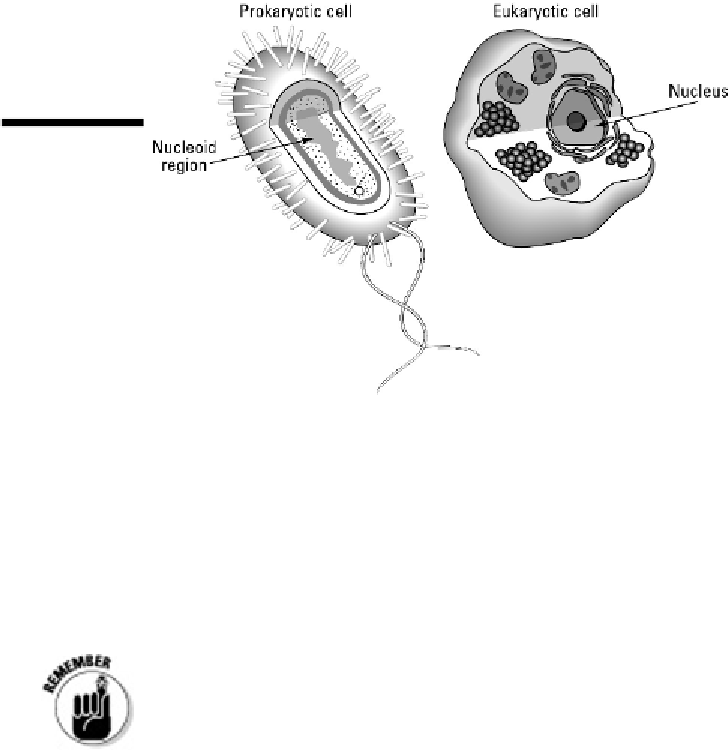Geology Reference
In-Depth Information
Figure 18-2:
A
prokaryotic cell
and a eukaryotic
cell.
You know it as pond scum: Cyanobacteria
A prokaryotic organism that you may be familiar with is
cyanobacteria.
Cyanobacteria is
a single-celled organism that also goes by the name
blue-green algae.
When large colon-
ies of cyanobacteria flourish, they create a slimy green film on the surface of a lake or
pond; thus, they have also become known as
pond scum.
These simple, single-celled organisms are extremely powerful. They possess
the ability to transform sunlight and carbon dioxide gas into sugar energy and
oxygen gas via a process called
photosynthesis.
As Figure 18-3 illustrates, photo-
synthesis is the biological process through which green plants transform sunlight,
water, and carbon dioxide into oxygen and energy. The plants use the energy to
grow and release the oxygen back into the atmosphere.
Scientists think that by the middle to the end of the Archean eon, communities of cy-
anobacteria were practicing photosynthesis. Fossilized structures called
stromatolites
provide evidence that these photosynthetic organisms existed by the beginning of the
Proterozoic eon.



